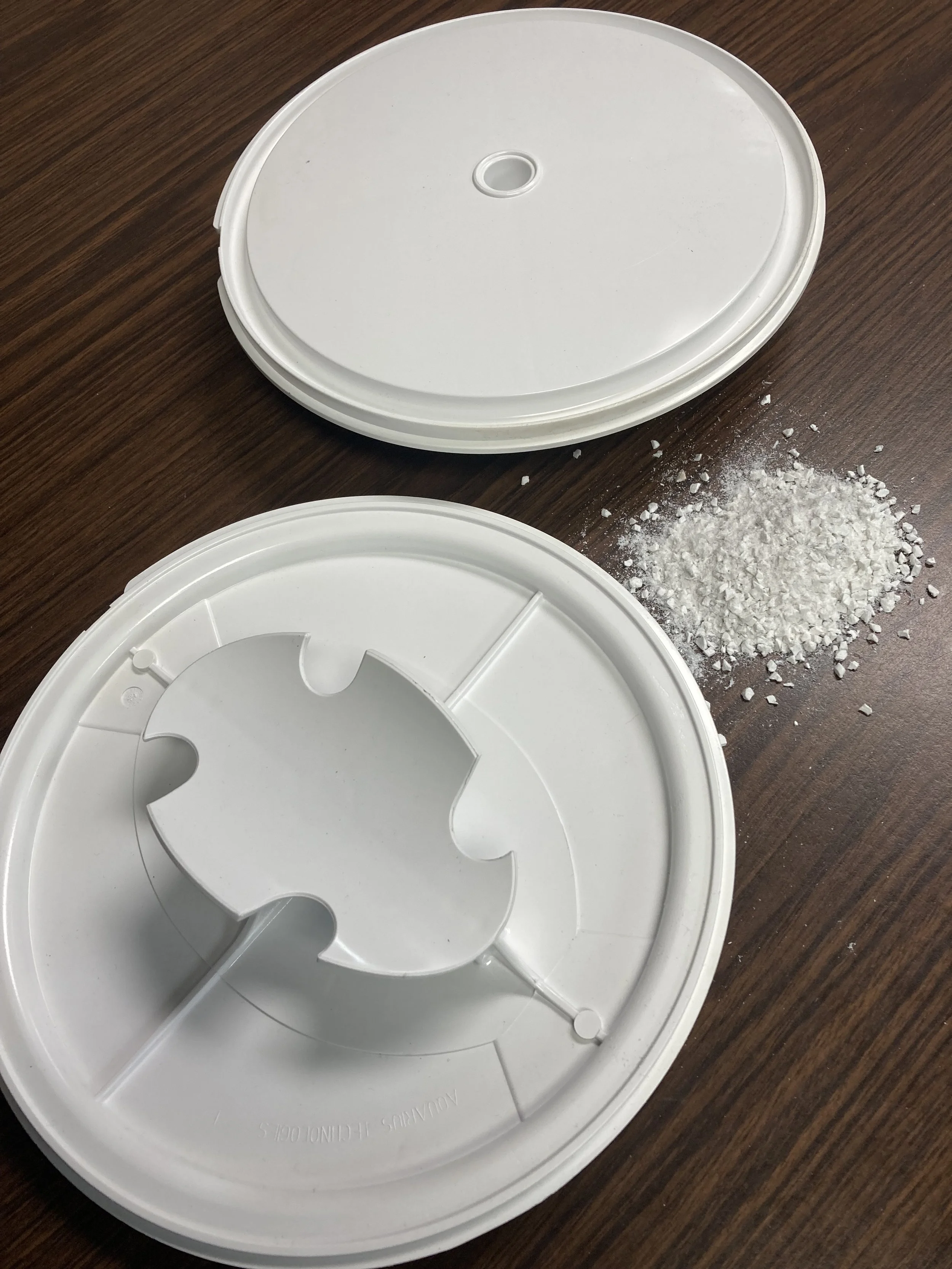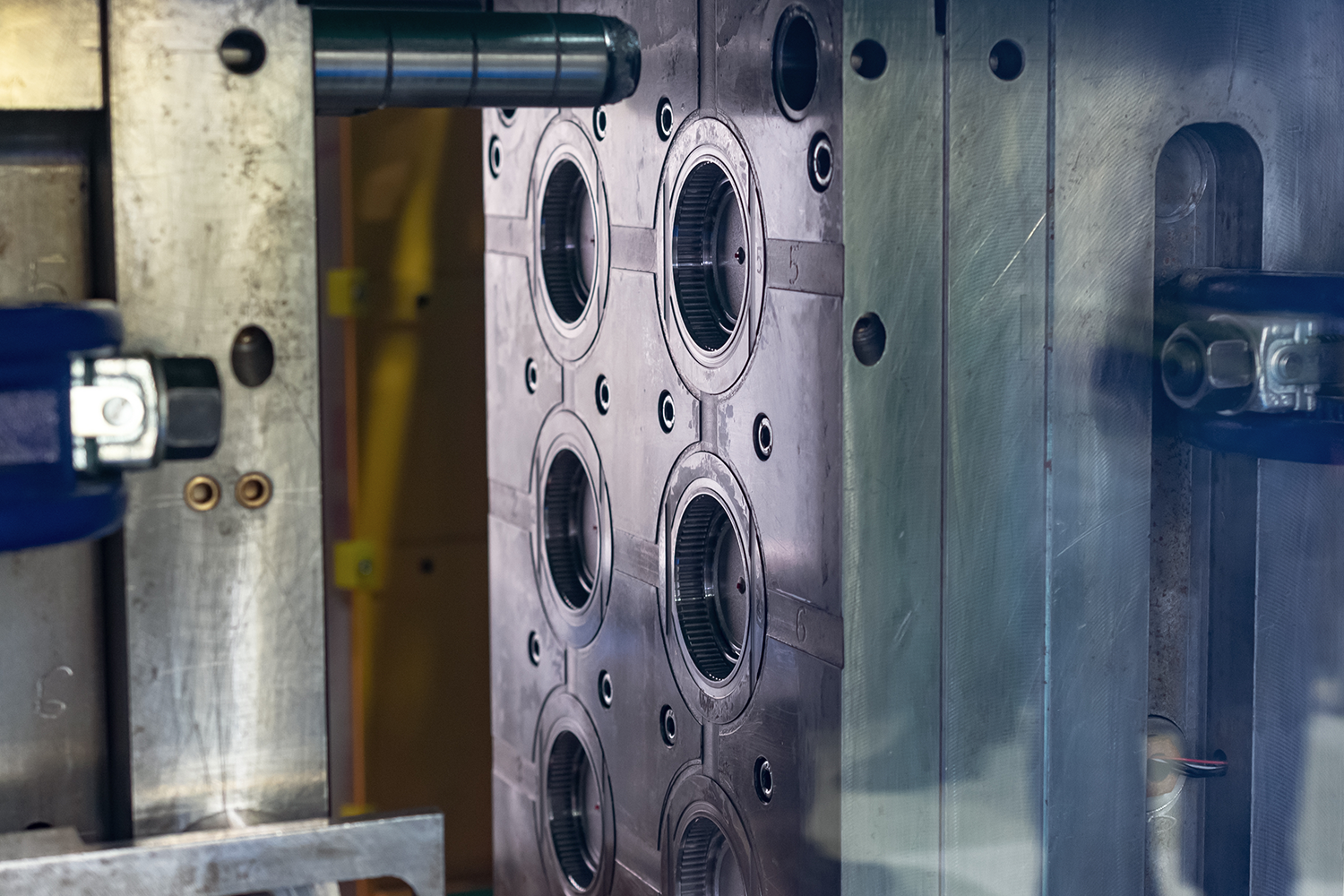Material Selection for Injection Molding: A Key to Product Performance and Quality
Author: Randy Ollhoff, Plant Manager
Selecting the right plastic materials for injection molding is one of the most important decisions product engineers can make during the design and manufacturing process. Material selection directly impacts the performance, durability, and cost of the final product. With more than a thousand base resins to choose from, each with varying formulations and properties, selecting the right material can be overwhelming. This comprehensive guide will help engineers and designers navigate the complex decision-making process, considering factors such as material properties, environmental impacts, and manufacturing requirements to make informed choices.
Key Questions to Ask Early in the Product Design Cycle
When beginning a new product design, the material selection process must be initiated with a clear understanding of the product's intended use and environmental requirements. Asking the following questions early in the design cycle will ensure that material choices align with the product’s intended function and performance needs:
How is the product used?
What environmental conditions will it face?
What mechanical stresses will it experience?
What aesthetic requirements are there?
These foundational questions guide engineers toward the materials that best fit the product’s intended purpose, helping to ensure performance, cost-efficiency, and manufacturability from the outset.
Understanding Injection Molding Material Properties
The material properties required for injection molding depend heavily on the specific demands of the product. A key consideration is whether the material can withstand the mechanical stresses and environmental conditions it will face during its service life. Common properties that engineers must consider include:
Tensile Strength: The ability of a material to resist being pulled apart. High-tensile strength is critical for products exposed to stretching forces.
Flexural Modulus: Indicates a material's stiffness when subjected to bending. A higher flexural modulus is essential for products that will experience bending forces.
Impact Resistance: The ability to absorb and dissipate energy from sudden shocks or impacts. Products exposed to high impact forces require materials with high impact resistance.
Heat Resistance: The ability to withstand high temperatures without losing mechanical properties. Products used in high-temperature environments must be made from materials with suitable heat resistance.
Chemical Resistance: The ability of a material to resist degradation when exposed to various chemicals. This is crucial for products used in harsh chemical environments.
Electrical Insulation: The dielectric strength of a material is important for products used in electrical applications to prevent the passage of electrical currents.
Types of Thermoplastics and Their Properties
Injection molding materials are broadly categorized into amorphous and semicrystalline types. These two groups exhibit significantly different characteristics, which can influence both performance and processing during manufacturing.
Properties of Amorphous Thermoplastics
Wide Temperature-softening Range: Amorphous thermoplastics tend to soften over a broad range of temperatures, making them easier to process but less stable at high temperatures.
Good Transparency and Formability: Materials like acrylic (PMMA) and polycarbonate (PC) are known for their clarity and ease of forming into complex shapes.
Poor Chemical Resistance: Amorphous materials may degrade more easily when exposed to certain chemicals, limiting their applications in some industries.
Prone to Stress Cracking: Due to their molecular structure, amorphous materials are more likely to experience stress cracking when subjected to continuous mechanical load or environmental stresses.
Common Amorphous Materials
PMMA: Known for its clarity and aesthetic appeal, suitable for optical applications like lenses and windows.
PC: Offers high impact resistance and clarity, commonly used in safety glasses, medical devices, and automotive components.
Acrylonitrile Butadiene Styrene (ABS): Provides good impact resistance and is commonly used for consumer goods such as toys and appliance parts.
Properties of Semicrystalline Thermoplastics
Sharp Melting Point: Semicrystalline thermoplastics exhibit a clear transition between solid and liquid phases, making them easier to process at a specific temperature.
Good Fatigue Resistance: Materials like nylon (PA) and polypropylene (PP) offer better resistance to long-term stress and wear compared to amorphous materials.
Good Chemical Resistance: These materials are often more resistant to chemicals, making them ideal for industrial applications where exposure to chemicals is common.
Opaque and Difficult to Bond: Semicrystalline materials are typically opaque and may require specialized bonding techniques, such as welding or solvent bonding.
Common Semicrystalline Materials
PA: Known for its high tensile strength and excellent wear resistance, commonly used in gears and bearings.
PP: A flexible and rigid material, ideal for containers and medical applications due to its chemical resistance and low cost.
Polyethylene Terephthalate (PET): Offers good clarity and barrier properties, often used in food and beverage packaging.
Factors to Consider in Material Selection
When selecting materials for injection molding, it’s crucial to balance performance with other key considerations such as cost, manufacturability, and environmental factors. Below are important factors to consider:
1. Environmental and Performance Considerations
Temperature Range: Materials used in products exposed to extreme temperature conditions must possess high heat resistance. For example, automotive parts or electronics may need materials that can withstand both high and low temperatures without compromising strength or functionality.
UV Exposure: Products that are exposed to sunlight must be made from materials that resist UV degradation. UV-resistant additives can be incorporated into polymers to extend the product's lifespan.
Moisture Sensitivity: Some thermoplastics, especially semicrystalline materials like nylon, are highly sensitive to moisture, which can affect their mechanical properties. Material pre-drying is sometimes necessary before molding to prevent this issue.
2. Manufacturing Process Compatibility
Moldability: Not all materials are suited for all injection molding processes. Some may be difficult to mold into intricate shapes, which can lead to defects or increased cycle times. Materials with lower melt viscosity tend to flow better into complex molds.
Flow Rate: The flow rate of a material influences how quickly it fills the mold during the injection process. High-flow materials are ideal for intricate designs or complex mold cavities, while low-flow materials are better suited for parts that require greater structural integrity.
3. Cost and Production Volume
Cost Considerations: Material costs vary widely depending on the type of resin, availability, and required processing. Selecting the appropriate material can help balance the need for performance with cost-effectiveness.
Production Volume: For high-volume production, consistency and ease of molding are paramount. For low-volume runs or prototype production, material flexibility and ease of processing may take precedence.
Challenges in Material Selection
Selecting the right material isn’t always straightforward. Engineers often face challenges such as:
Balancing Trade-offs: There is often a trade-off between material performance, cost, and manufacturability. For example, a highly durable material with excellent impact resistance may be more expensive or harder to process.
Material Availability: Not all materials are readily available in all regions, and sourcing challenges can affect both cost and production timelines.
Performance Limitations: Even with careful material selection, sometimes the material may not perform as expected due to unforeseen environmental or mechanical factors.
Future Trends in Material Selection
The world of injection molding is evolving rapidly, with emerging technologies impacting material selection. Sustainable materials and bio-based polymers are gaining attention as industries look to reduce their environmental footprint. Additionally, additive manufacturing is opening new possibilities for combining materials and creating custom blends that optimize performance for specific applications.
The Importance of Expert Consultation
Material selection for injection molding is a complex process that requires expertise in both materials science and manufacturing processes. By understanding the properties of different thermoplastics and considering factors such as temperature, stress, and production volume, engineers can make informed decisions that maximize product quality while minimizing costs.
Consulting with an experienced partner like E-S Plastics can provide invaluable insights into the material selection process.
With years of experience in molding both semicrystalline and amorphous materials, E-S Plastics helps businesses choose the right materials to ensure optimal product performance, durability, and manufacturability.









